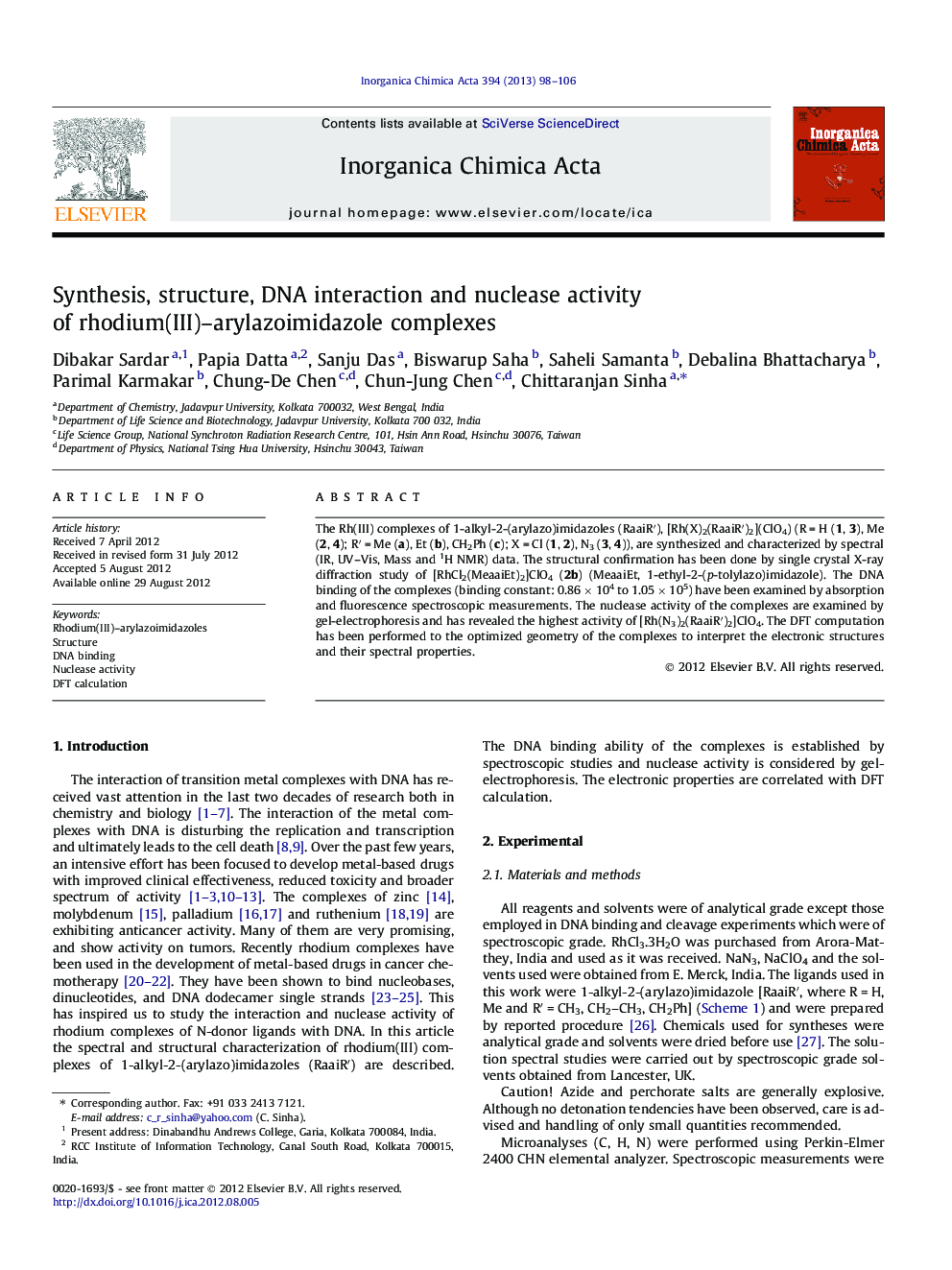| Article ID | Journal | Published Year | Pages | File Type |
|---|---|---|---|---|
| 1310564 | Inorganica Chimica Acta | 2013 | 9 Pages |
The Rh(III) complexes of 1-alkyl-2-(arylazo)imidazoles (RaaiR′), [Rh(X)2(RaaiR′)2](ClO4) (R = H (1, 3), Me (2, 4); R′ = Me (a), Et (b), CH2Ph (c); X = Cl (1, 2), N3 (3, 4)), are synthesized and characterized by spectral (IR, UV–Vis, Mass and 1H NMR) data. The structural confirmation has been done by single crystal X-ray diffraction study of [RhCl2(MeaaiEt)2]ClO4 (2b) (MeaaiEt, 1-ethyl-2-(p-tolylazo)imidazole). The DNA binding of the complexes (binding constant: 0.86 × 104 to 1.05 × 105) have been examined by absorption and fluorescence spectroscopic measurements. The nuclease activity of the complexes are examined by gel-electrophoresis and has revealed the highest activity of [Rh(N3)2(RaaiR′)2]ClO4. The DFT computation has been performed to the optimized geometry of the complexes to interpret the electronic structures and their spectral properties.
Graphical abstract[RhX2(RaaiR′)2](ClO4) (RaaiR′ = 1-alkyl-2-(arylazo)imidazole) are characterized by spectral data. The structural confirmation has been done by single crystal X-ray diffraction study of [RhCl2(MeaaiEt)2]ClO4 (2b) (MeaaiEt, 1-ethyl-2-(p-tolylazo)imidazole). The DNA binding of the complexes (binding constant: 0.86 × 104 to 1.05 × 105) have been examined. The nuclease activity of the complexes are examined by gel-electrophoresis. The DFT computation has been performed to the optimized geometry of the complexes to interpret the electronic structures and their spectral properties.Figure optionsDownload full-size imageDownload as PowerPoint slideHighlights► Rh(III) complexes of azoimidazoles are structurally characterized. ► The DNA binding ability of the complexes is studied spectroscopically. ► Nuclease activity is examined by gel-electrophoresis. ► DFT analysis has been used to explain spectra and DNA interactions.
